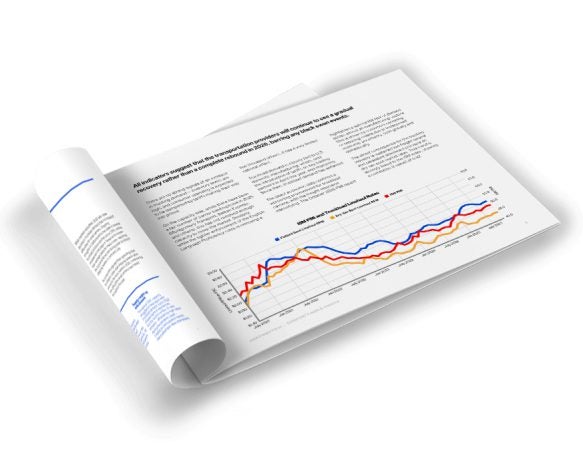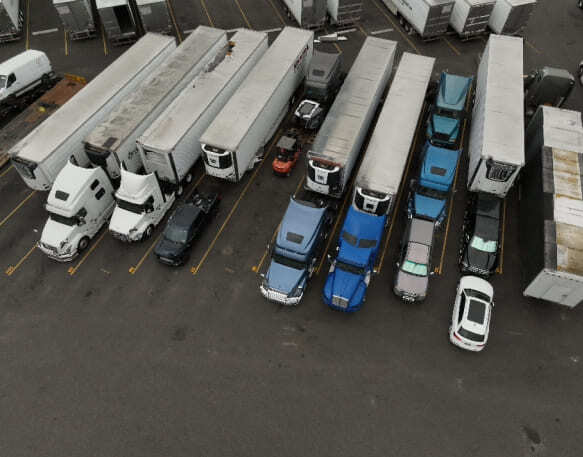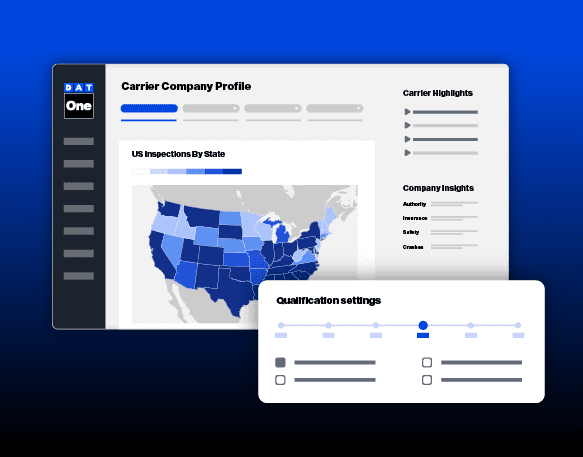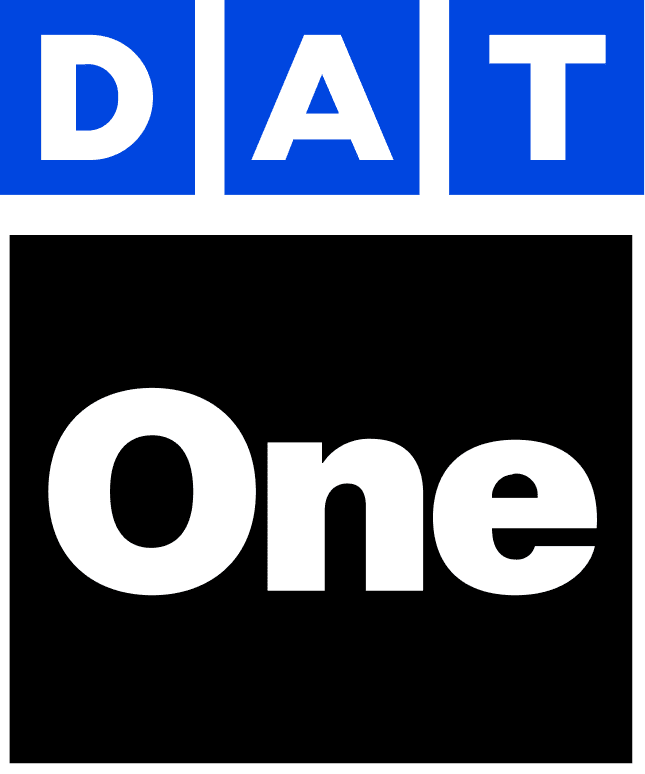
What Does OTR Mean in Trucking?
OTR, or over-the-road trucking, is a term often heard in the freight industry. But what exactly does it mean? For those new to trucking, understanding OTR is essential, as it plays a crucial role in long-haul transportation across the country. OTR trucking involves hauling freight over long distances, typically between states, and requires a unique set of skills and lifestyle adjustments. Let’s break down what OTR trucking is and why it’s significant in the trucking world.
The complete guide to OTR trucking for carriers
From hot shot trucking to local deliveries and cross-country trips, truckers have many options when it comes to which loads they pick up and where they go. With 2.2 million of the 3.5 million active truck drivers in the U.S. working as over-the-road (OTR) truckers as of 2023, OTR trucking is an incredibly popular option.
OTR drivers are responsible for moving 72.6% of the freight in the U.S., putting them at the heart of our economy. Without OTR trucking, manufacturers and stores would need to turn to a combination of trains and local or regional trucking to receive new inventory—but who exactly are these drivers, and what do they do?
This article will go over the meaning of OTR, what OTR drivers do, how to become an OTR driver, challenges in OTR trucking jobs, how drivers can find OTR loads, and more.
OTR vs. regional vs. local trucking: What’s the difference?
In the trucking industry, not all driving jobs are created equal. The terms OTR, regional, and local trucking each refer to different types of driving routes, schedules, and lifestyle requirements. Understanding the distinctions between these categories can help drivers and companies choose the right type of freight hauling for their needs.
- OTR trucking involves long-haul routes that often cross multiple states and may span thousands of miles. Drivers spend extended periods away from home, sometimes for weeks at a time, delivering freight coast-to-coast or to remote locations. This type of trucking offers higher earning potential but requires a willingness to embrace life on the road.
- Regional trucking covers shorter distances, typically within a specific region, such as the Midwest or the Southeast. Drivers may travel across several states but generally return home every few days or weekly. This setup balances extended travel and home time, making it ideal for drivers who want more frequent breaks from the road.
- Local trucking is focused on short-haul routes within a city or metropolitan area, usually allowing drivers to return home daily. This type of trucking involves more frequent stops, pickups, and deliveries, with shorter driving distances. While the earning potential may be lower compared to OTR trucking, it’s a popular choice for those seeking a more predictable schedule and time with family.
OTR trucking in context: The first-mile, middle-mile, and last-mile
While the focus of this piece is on OTR trucking itself, understanding OTR means understanding its context. OTR trucking is just one portion of the larger logistics industry. In fact, logistics are broken into three key segments: first-mile, middle-mile, and last-mile logistics. Let’s take a closer look at each of these segments:
- First-mile logistics: This is the first stage of the logistics process where goods are transferred from the manufacturer to the distribution center or warehouse. Products can originate from anywhere in the world. No matter where they begin, wherever the products go next is considered the first mile.
- Middle-mile logistics: OTR trucking is part of the middle mile, or the stage where goods are transferred from warehouses and distribution centers to fulfillment or storage facilities. While the length of time of the middle mile can vary greatly depending on the origin and destination of the shipment, the importance of this section is always the same.
- Last-mile logistics: The final stage of the logistics process is the last mile, where goods are transferred from fulfillment facilities, like retail stores or transportation hubs, to the final delivery destination, typically a consumer’s hands. The goal of this stage is speed, as anyone who’s ever ordered a product with same or next-day delivery knows all too well.
How to become an OTR truck driver
To pursue a career in OTR trucking, the first step is obtaining a Commercial Driver’s License (CDL), which is required to legally operate large commercial vehicles. The process of earning a CDL varies by state but generally includes passing both a written exam and a practical driving test. Aspiring drivers should begin by studying their state’s CDL handbook or enrolling in a trucking school to take a CDL course for more structured training.
There are three classes of CDLs, each qualifying drivers to operate different types of vehicles:
- Class A CDL: The most versatile CDL, allowing drivers to operate vehicles with a gross combination weight rating (GCWR) of 26,001 pounds or more, provided the towed vehicle weighs over 10,000 pounds. A Class A license qualifies you for various OTR trucking jobs, including driving tractor-trailers, flatbeds, tanker vehicles, and livestock carriers. It also covers most Class B and C vehicles.
- Class B CDL: Designed for operating single vehicles exceeding 26,001 pounds, such as straight trucks, box trucks, and some buses. While less common in OTR trucking jobs, a Class B CDL may still be useful for certain regional or specialized driving roles. If towing is involved, the trailer’s weight must be under 10,000 pounds.
- Class C CDL: Required for driving vehicles under 26,001 pounds that are used to transport passengers or hazardous materials. Class C CDL holders can operate smaller vehicles like passenger vans, provided they have the proper endorsements for specific types of cargo.
Automatic-only CDL restriction: If you take your CDL skills test in a truck with an automatic transmission, your license will include a restriction—known as Restriction E—which limits you to driving automatic vehicles only. To avoid this limitation and qualify to drive both manual and automatic trucks, it’s best to test in a manual transmission vehicle if possible.
Additionally, drivers need to pass a CDL hazmat written knowledge test to transport hazardous materials and gain their H endorsement. Other CDL endorsements include:
- N Endorsement: Allows driving tanker vehicles carrying liquids or gasses.
- T Endorsement: Authorizes operating double or triple trailers.
- X Endorsement: Combines the hazmat and tanker qualifications for drivers hauling hazardous materials in a tank.
The challenges of being an OTR trucker
Once you’ve earned all the necessary licenses, you’re ready to embark on an exciting career as an OTR driver! Life on the open road is an adventure, full of unique experiences and the chance to see parts of the country that many people never get to explore. While being an OTR trucker means spending time away from home, it also offers the freedom to travel and the opportunity to develop valuable skills. You may encounter a variety of weather, busy highways, and limited meal choices, but each of these can be an opportunity to build resilience and resourcefulness.
Below are some of the challenges you might face as an OTR trucker:
- Finding parking: One of the biggest daily frustrations for OTR drivers is finding a safe, legal place to park, particularly at night. With truck parking in short supply, many drivers are now paying out-of-pocket for spots at truck stops or rest areas. Lack of parking not only eats into your time and money, but it also adds stress at the end of a long day on the road.
- Hours of Service (HOS) rules: HOS rules were initially introduced in the 1930s, though they’ve changed a little over the years. For long-haul drivers operating outside a 150 air-mile radius from their home terminal, the current rules state that you:
- Can drive a maximum of 11 hours after 10 consecutive hours off duty
- Cannot drive beyond the 14th consecutive hour after coming on duty
- Must take a 30-minute break after 8 cumulative hours of driving
- Cannot exceed 60 hours in 7 days or 70 hours in 8 days
If you hit these limits, you’ll need to wait for your hours to reset. This is typically done by taking 34 consecutive hours off duty.
Note: If you’re a short-haul driver operating within a 150 air-mile radius, different exemptions apply. These drivers often work up to 12 hours per day, follow the same 60/70 hour weekly limits, and usually enjoy more regular schedules with weekends off.
To help enforce these rules, the federal government introduced the electronic logging device (ELD) mandate in 2019, requiring most commercial drivers to track hours electronically.
- Lengthy detentions: In OTR trucking, you’ll also often experience delays when picking up or delivering loads. These detentions typically take two to two-and-a-half hours but can occasionally last longer and throw a wrench in your schedule.
- Poor infrastructure: Unfortunately, much of the United States’ infrastructure is aging and in poor condition which can make driving across the country difficult. 65% of major U.S. roads are in “less than good condition,” according to the U.S. Department of Transportation. It’s also worth noting that 42% of bridges in the U.S. are 50 years old (or older) and 46,154 bridges are currently structurally deficient.
- High levels of stress: Spending so much time on the road and away from your family can be stressful as you figure out how to balance your personal life with such a time-consuming job. On top of that, you’ll need to deal with poor weather and visibility, construction, traffic jams, tight deadlines, and more.
- Physical health issues: OTR trucking can be stressful on the body. Not only will you spend days or weeks on the road at a time, but you’ll also likely spend that time sleeping in your truck’s cabin or motels and picking up fast food from rest stops. While being an OTR trucker involves a lot of travel, it’s a very sedentary job and, as a result, can result in health complications. Compared to the national working population, long-haul truckers are more likely to report having diabetes and are more than twice as likely to be obese (69% vs. 31%) or have morbid obesity (17% vs. 7%).
Find success as an OTR trucker
OTR trucking offers drivers the opportunity to earn higher wages while covering long-haul, coast-to-coast routes. However, it requires a commitment to spending extended periods away from home and careful planning to manage both time and profits effectively. Success in OTR trucking also depends on following safety regulations, obtaining the proper endorsements, and strategically selecting loads to minimize downtime. Whether you’re a new driver or managing a large fleet, mastering these elements is essential to thrive in the demanding world of over-the-road trucking.
FAQs
A few things you might be asking yourself
OTR, or over-the-road trucking, refers to long-haul driving where truckers transport freight across long distances, often traveling between states or coast to coast. OTR drivers typically spend extended periods on the road, sometimes weeks at a time, as they deliver goods to various locations. This type of trucking requires drivers to adapt to a life away from home, offering higher earning potential due to the increased demand and mileage.
OTR trucking allows drivers to work up to 11 hours within a 14-hour window each day, as regulated by Hours of Service (HOS) rules. After being on duty for 14 consecutive hours, drivers must take a mandatory 10-hour off-duty break before resuming driving. While drivers can be on duty for up to 14 hours, only 11 of those hours can be spent driving; the remaining time can be used for breaks, fueling, inspections, and other duties. Additionally, a 30-minute break is required after 8 hours of driving to promote safety and reduce fatigue.
Over-the-road trucking companies are always looking for new drivers, and they pay accordingly. Compared to other trucking jobs, OTR driver jobs typically offer a higher salary, though the exact amount can vary depending on years of experience, routes, types of loads, and more. The average salary for an OTR truck driver is $64,471 per year, and the median is $64,000, according to PayScale. However, some OTR drivers make as little as $42,000 per year, while others make $91,000 or more per year. Typically, those with more experience and certain endorsements make salaries towards the top of the range.
OTR trucking usually involves long-haul routes, where drivers move full truckloads across states or regions. These trips are often direct, with few stops, and can last several days or more.
LTL (less-than-truckload) is used for smaller freight that doesn’t fill an entire trailer. It operates on a hub-and-spoke system in which freight is picked up from multiple customers, consolidated at terminals, and moved through regional hubs using smaller linehaul trailers (often 28-foot). The final delivery is typically handled by a local driver.
While LTL shipments can travel long distances, the freight makes the journey via a network of handoffs. OTR drivers, on the other hand, usually stay with the load from origin to destination.
To work in OTR trucking, you’ll need a Class A Commercial Driver’s License, which qualifies you to operate combination vehicles with a gross weight of 26,001 pounds or more.
Be mindful of the automatic-only restriction (Restriction E). If you take your CDL skills test in a truck with an automatic transmission, your license will limit you to driving automatic vehicles. Testing in a manual transmission truck helps avoid this restriction and keeps your job options open.
You can also add endorsements to expand your qualifications:
- H endorsement for hazardous materials
- N endorsement for tanker vehicles
- T endorsement for double/triple trailers
These endorsements require passing additional written tests and, in some cases (like hazmat), background checks.
Find OTR freight with DAT!
Ready to make your OTR trucking journey more profitable and efficient? With DAT One Load Board, you can quickly find high-paying loads that fit your route and schedule. Access nearly 668,000 daily load posts, including 230,000 exclusive listings, all updated in real-time. Set custom alerts to catch top opportunities and use our mobile app for on-the-go convenience. Whether you’re just starting out or managing a fleet, learn how our flexible plans can help you achieve success in OTR trucking.




